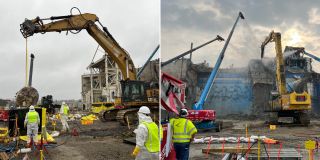Nuclear plays key role in new jobs recovery plan
 A recently published paper on clean energy policy for economic recovery calls for the preservation of the current U.S. nuclear reactor fleet and the deployment of advanced nuclear technologies.
A recently published paper on clean energy policy for economic recovery calls for the preservation of the current U.S. nuclear reactor fleet and the deployment of advanced nuclear technologies.
The paper, Energy Transitions: The Framework for Good Jobs in a Low-Carbon Future, was released last week by the Labor Energy Partnership (LEP), formed earlier this year by the Washington, D.C.–based nonprofit Energy Futures Initiative (EFI) and the AFL-CIO. According to a joint press release from the two organizations, the LEP was established to “develop policy solutions for a 21st century energy system that creates and preserves quality jobs while tackling the climate crisis.”
The LEP is jointly chaired by Ernest Moniz, founder and chief executive officer of EFI and former U.S. energy secretary, and Richard Trumka, president of the AFL-CIO.




 The European Union’s education and training policy must do more to ensure that the nuclear sector has a sufficient number of people with the right skills, according
The European Union’s education and training policy must do more to ensure that the nuclear sector has a sufficient number of people with the right skills, according 


 Eric Goldin, president of the
Eric Goldin, president of the 

